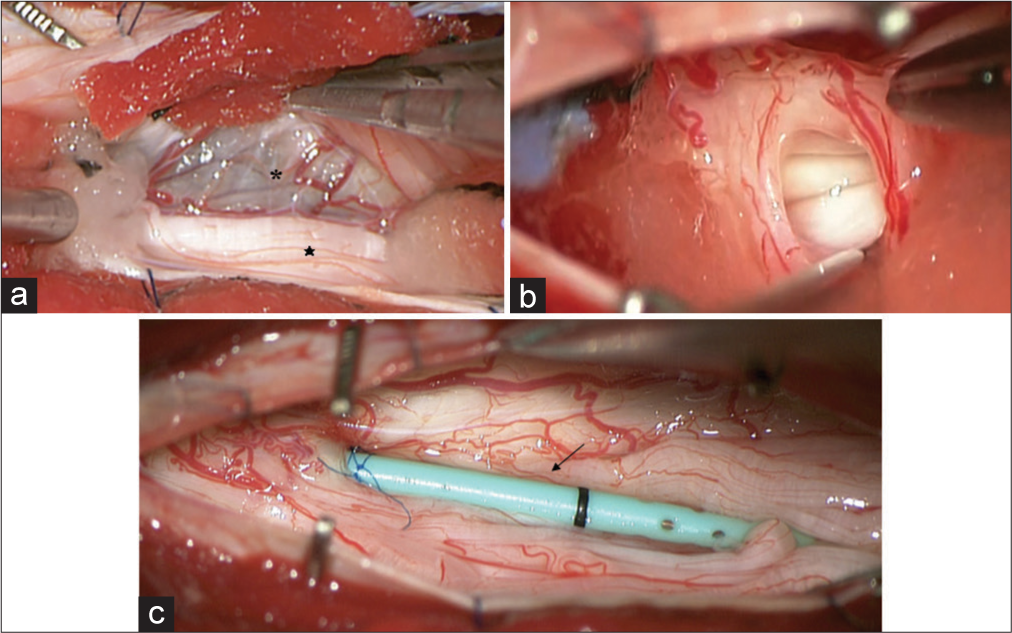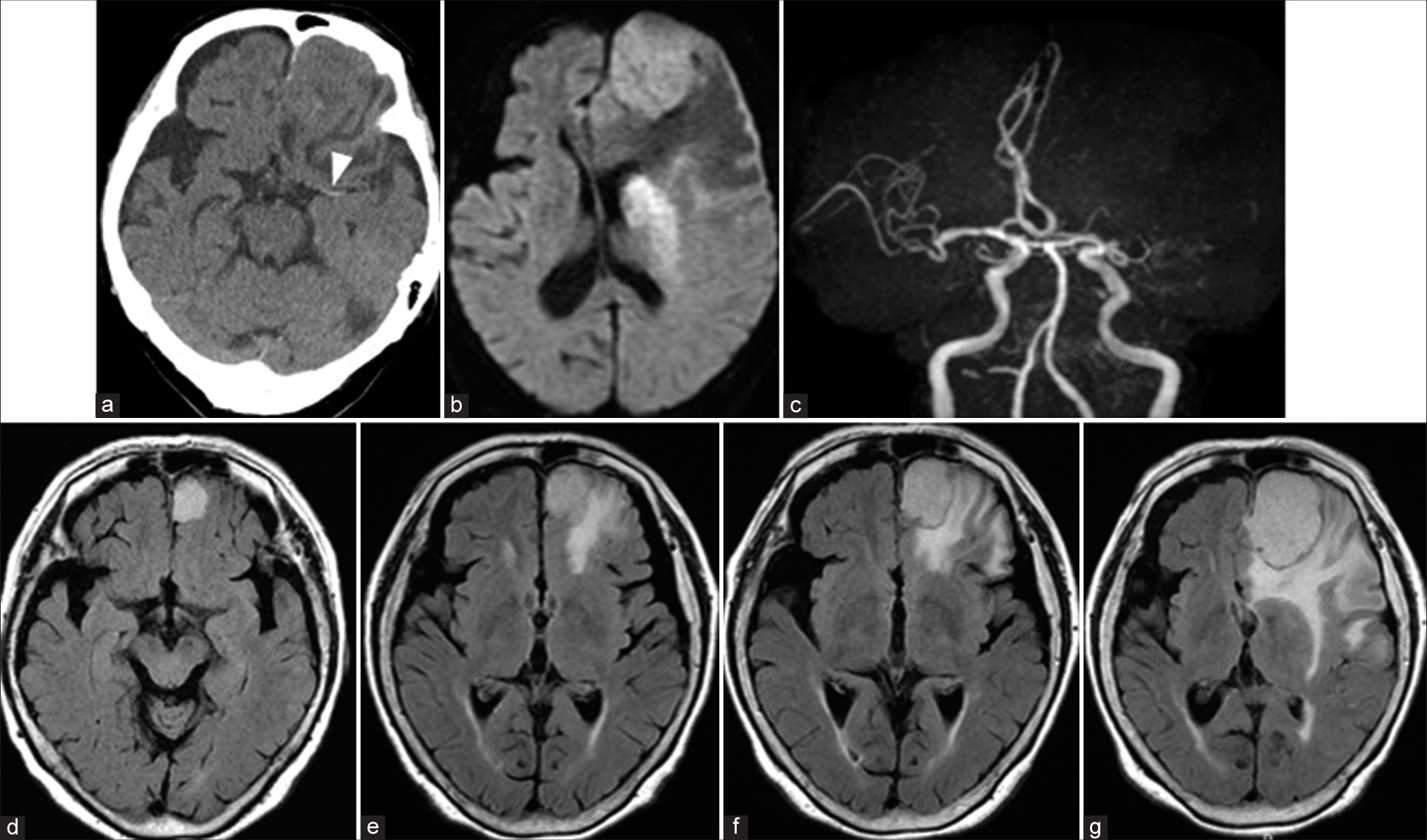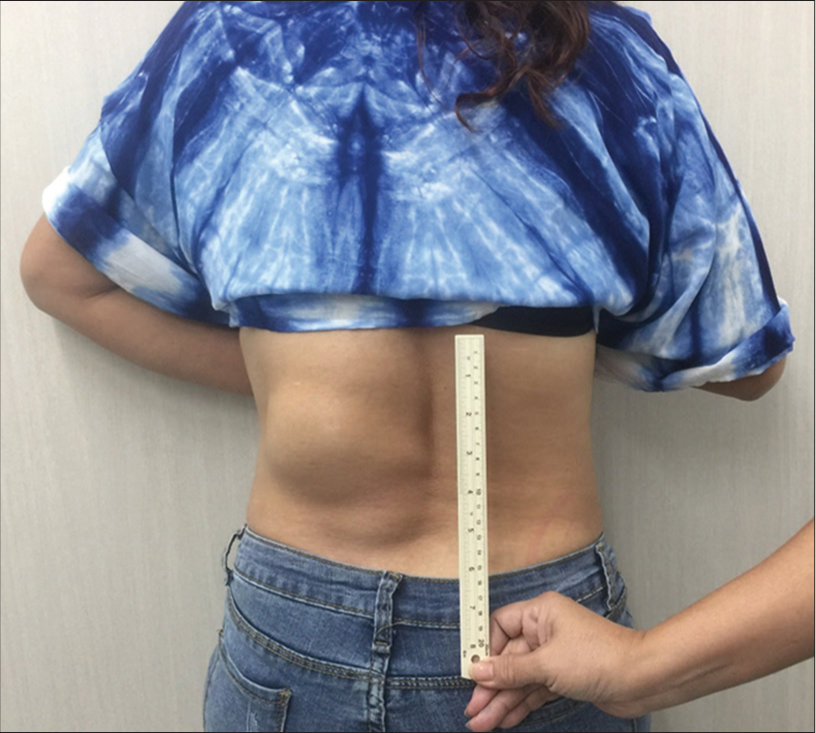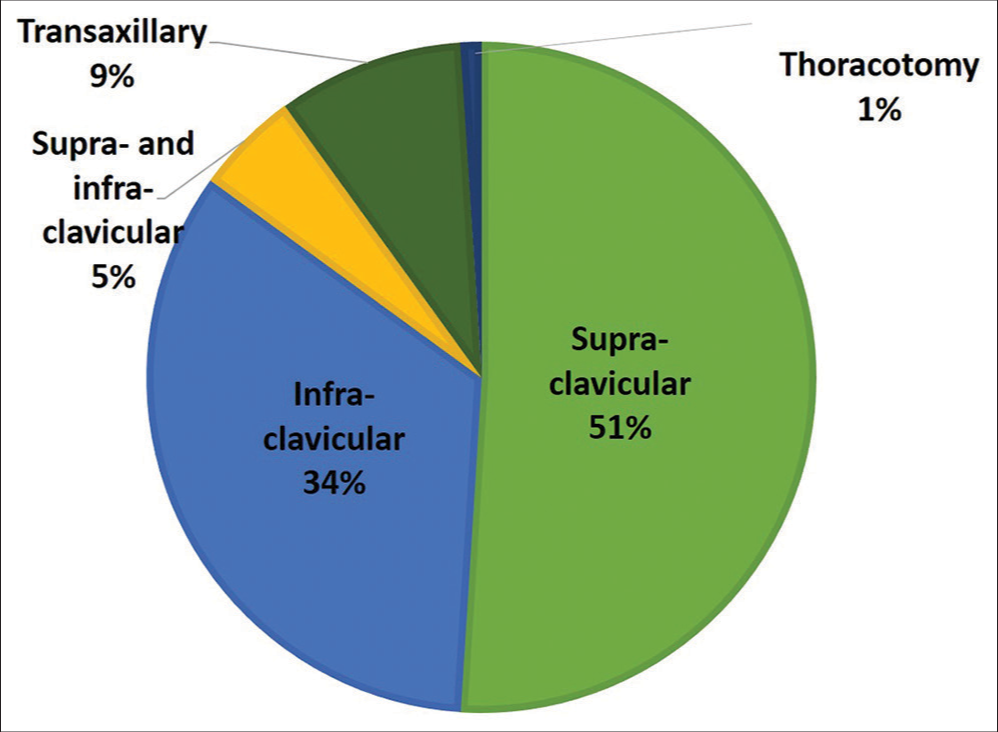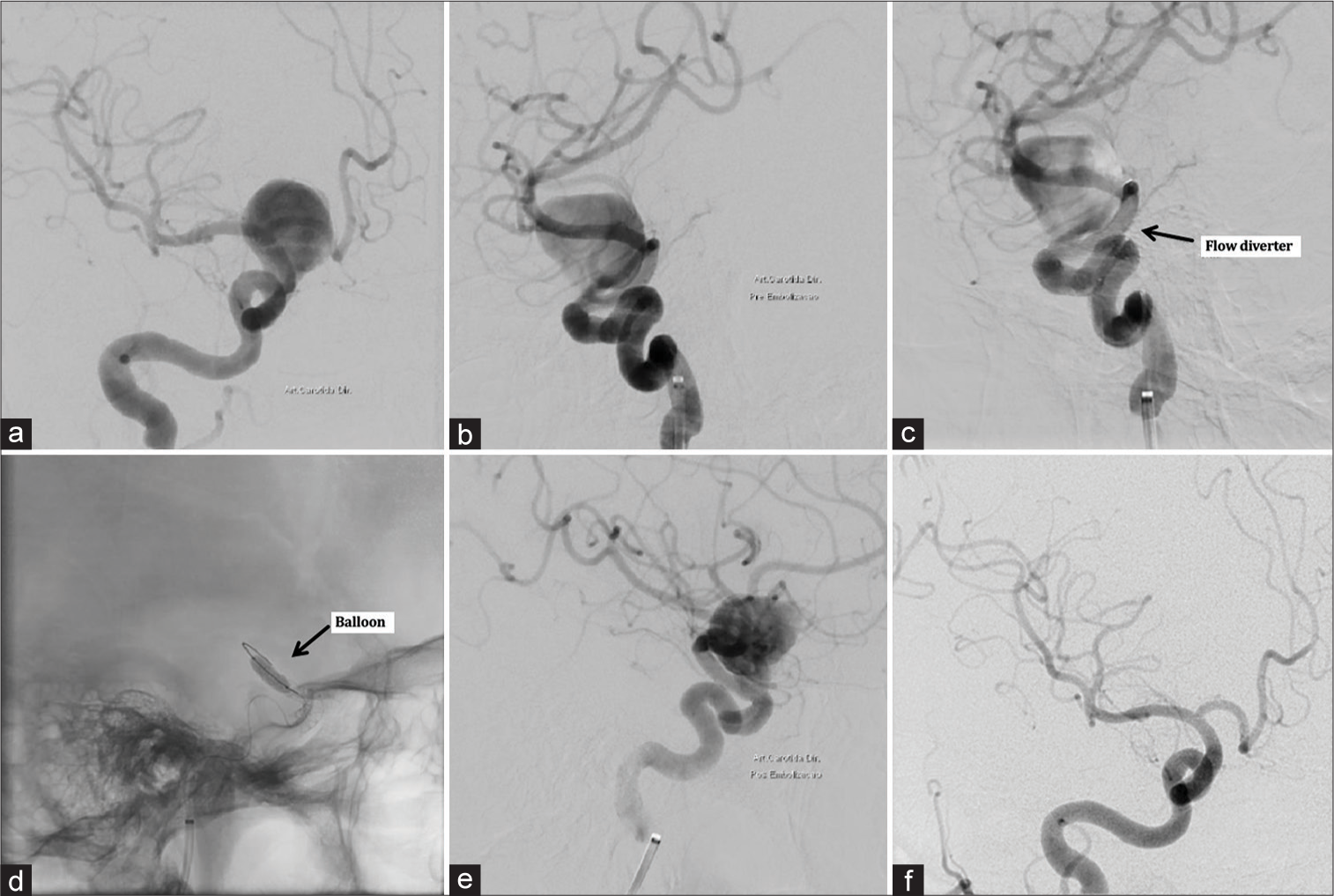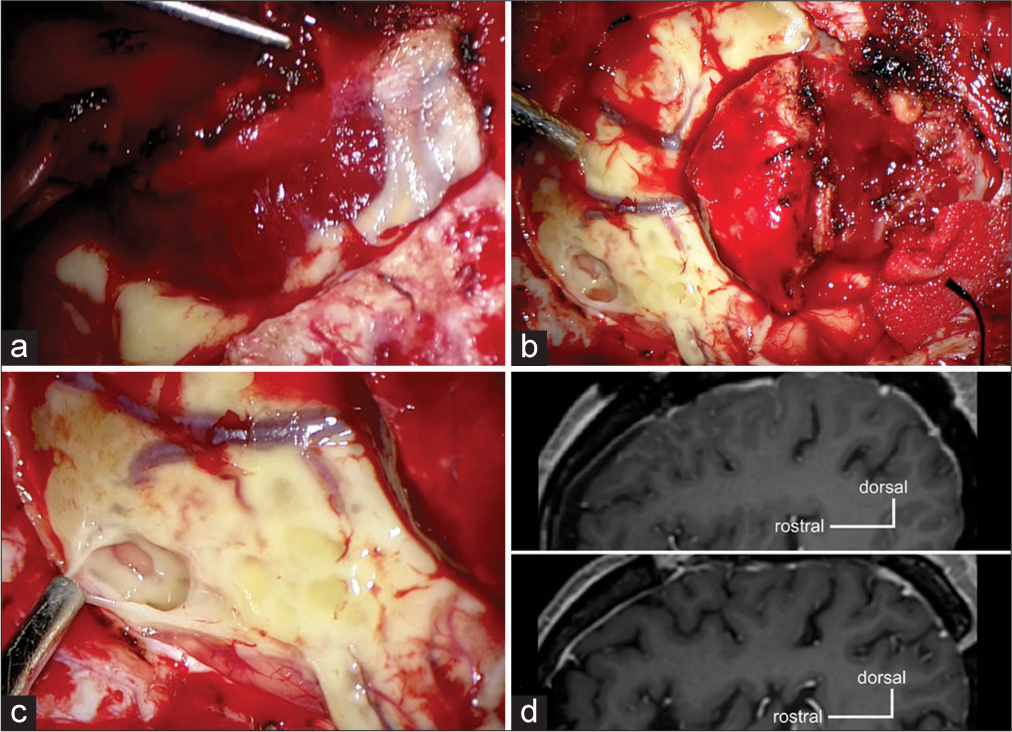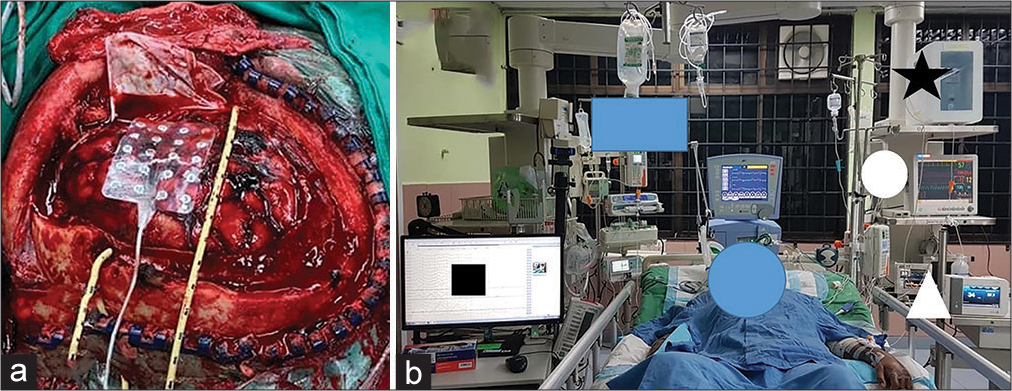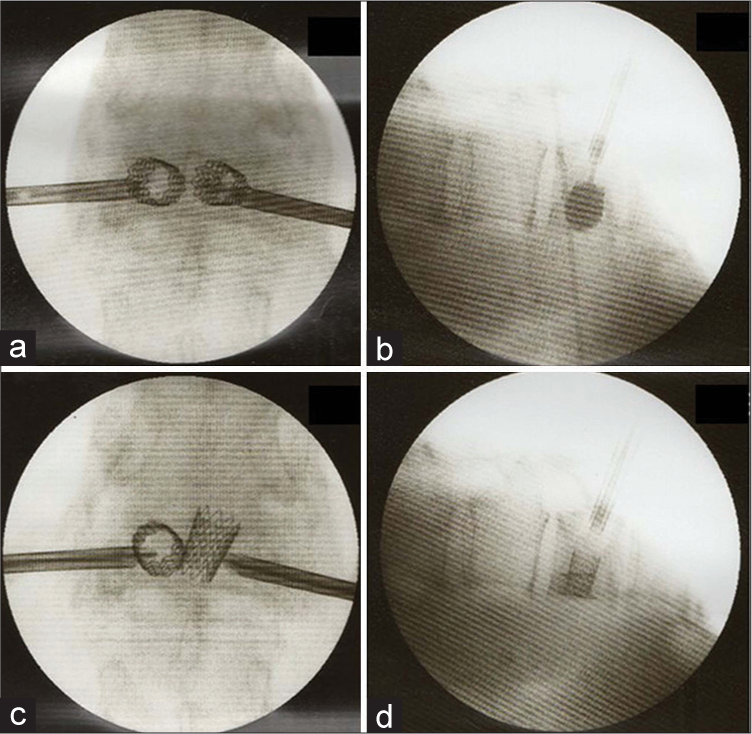Usefulness of cyst-subarachnoid shunt using syringo-subarachnoid shunt tube for symptomatic enlarging ventriculus terminalis: A case report and review of the literature
Date of publication: 05-May-2023
Background: The ventriculus terminalis (VT) is a cystic embryological remnant of the conus medullaris that usually regresses after birth. This structure rarely persists into adulthood and may produce neurological symptoms. We recently encountered three cases of symptomatic enlarging VT.
Intra-and peritumoral hemorrhage in the meningioma of a nonagenarian due to administration of direct oral anticoagulants after mechanical thrombectomy
Date of publication: 05-May-2023
Background: Spontaneous intratumoral hemorrhage of meningiomas is rare, and their incidence due to anticoagulants is unclear. The incidence of both meningioma and cardioembolic stroke increases with age. We report the very elderly case of intra- and peritumoral hemorrhage in frontal meningioma induced by direct oral anticoagulant (DOAC) following mechanical thrombectomy, in whom, surgical resection was required 10 years after the tumor was first indicated.
Spontaneous regression of extradural high-flow vascular malformation in spinal arteriovenous metameric syndrome (SAMS): A unique case report
Date of publication: 05-May-2023
Background: Spinal arteriovenous metameric syndrome (SAMS) is a rare nonhereditary genetic vascular disorder, involving multiple layers of tissues in the same metameric level. Spontaneous regression of SAMS has never been reported in the medical literature.
Tumors of the brachial plexus region: A 15-year experience with emphasis on motor and pain outcomes and literature review
Date of publication: 05-May-2023
Background: Brachial plexus region tumors are rare. In this study, we reviewed our experience with resection of tumors involving or adjacent to the brachial plexus to identify patterns in presentation and outcome.
Neurosurgery societies around the world: A study and discussion about its importance
Date of publication: 05-May-2023
Background: Harvey Cushing and collaborators created the first society of neurosurgeons in 1920, in the United States of America, the Society of Neurological Surgeons. In 1955, the World Federation of Neurosurgical Societies (WFNS) was created in Switzerland to improve neurosurgical care globally through the scientific cooperation of members. The performance of neurosurgical associations today is fundamental to discuss diagnostic methods and therapeutic approaches, transforming modern medicine. Although most neurosurgical associations are recognized worldwide, there are some societies that are not recognized internationally due to a lack of regulatory bodies and lack of official digital channels, among other reasons. The main objective of the article is to list the neurosurgical societies and to provide a more integrated view of the interactions between neurosurgical societies in different countries.
Silk + flow-diverter stent for the treatment of intracranial aneurysms associated with balloon angioplasty: A retrospective study
Date of publication: 05-May-2023
Background: The silk + flow-diverter stent is increasingly used to treat complex intracranial aneurysms including wide-neck and fusiform aneurysms. Balloon angioplasty has been used to better appose the flow diverter (FD) to the vessel wall and, thus, improve aneurysm occlusion rates and decrease periprocedural complications. Sparse data are available concerning the results of this technique. We report our experience with silk + FD associated with balloon angioplasty for the treatment of intracranial aneurysms.
Angiomatous meningioma associated with rapidly aggravated peritumoral leptomeningitis: A case report
Date of publication: 28-Apr-2023
Background: A special type of meningioma is known to have infiltrated inflammatory cells within the tumor, associated with peritumoral inflammation. However, there have been no reports of meningioma with inflammatory response only around the tumor, without inflammatory cells within the tumor itself.
Clinical outcomes and thermodynamics aspect of direct brain cooling in severe head injury
Date of publication: 28-Apr-2023
Background: Brain cooling therapy is one of the subjects of interest, and currently, data on direct brain cooling are lacking. Hence, the objective is to investigate the clinical outcomes and discuss the thermodynamics aspect of direct brain cooling on severely injured brain patients.
Coil embolization for post-bypass aneurysm of middle meningeal artery for moyamoya disease – preservation of transdural anastomosis
Date of publication: 28-Apr-2023
Background: Middle meningeal artery (MMA) pseudoaneurysm following revascularization surgery for moyamoya disease (MMD) is rare.
Intraoperative complications of vertebral body stenting system
Date of publication: 28-Apr-2023
Background: Vertebral body stenting systems (VBSs) are superior to balloon kyphoplasty for performing vertebral augmentation and height restoration. However, VBS may likely result in more material-related complications that have been under-reported. Here, an 84-year-old female’s vertebral stents “toppled over” before the filling cement was fully applied, thus necessitating an additional posterior fusion.


